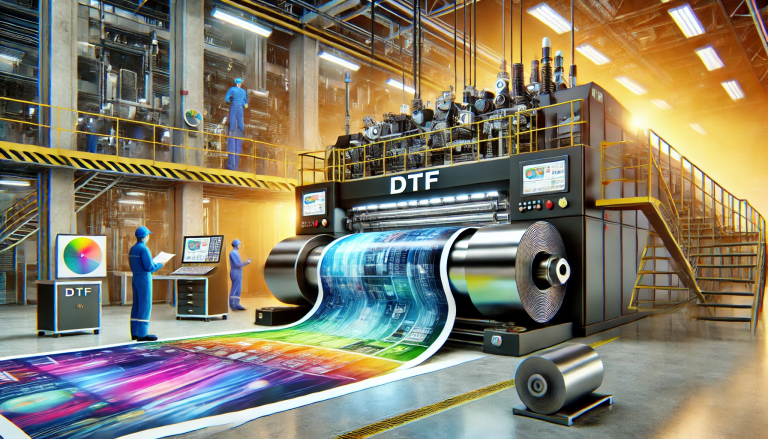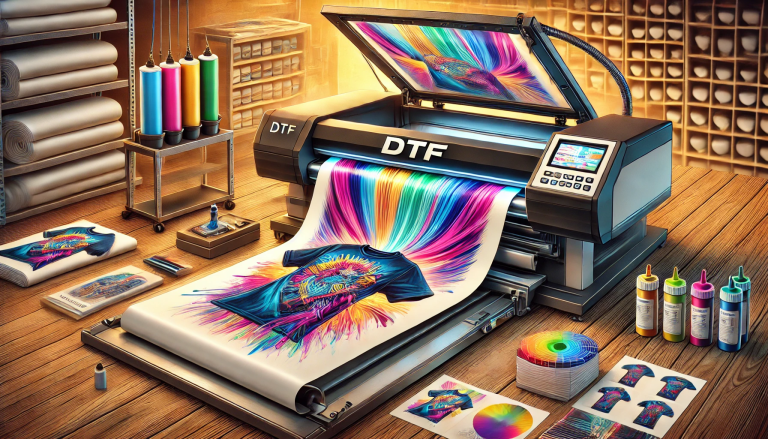“Print on the right side of Cold Peel DTF Film for the best results!” -MAXDTF- impresora DTF A3 Manufacturer, DTF Film double-sided Supplier, Made in china
Introduction
Which side of Cold Peel DTF Film do you print on? This is an important question to consider when printing this type of film. Cold Peel DTF Film is a type of film used for digital printing and designed to be used with a heat press. It is a great choice for fabric printing, as it is durable and provides a high-quality finish. This article will discuss which side of the film should be printed on and the best practices for using this type of film. We will also discuss the advantages and disadvantages of using Cold Peel DTF Film for printing.
Tips for Choosing the Right Side of Cold Peel DTF Film for Your Printing Needs
1. Consider the type of material you are printing on. Different types of materials require different types of cold peel DTF film. For example, if you are printing on a glossy surface, you should choose a film designed for that material.
- Consider the type of printer you are using. Different printers require different types of film. For example, some printers may require a film designed for aqueous inkjet printing, while others may require a film designed for solvent-based printing.
- Consider the type of image you are printing. Different types of images require different types of film. For example, if you print a photograph, you should choose a film for photographic printing.
- Consider the size of the image you are printing. Different sizes of images require different types of film. For example, if you print a large image, you should choose a film designed for large-format printing.
- Consider the type of finish you want for your image. Different types of finishes require different types of film. For example, choose a film designed for glossy printing if you want a glossy finish.
- Consider the cost of the film. Different types of films have different costs. For example, some films may be more expensive than others. It is important to consider the film’s cost when deciding.
- Consider the quality of the film. Different types of films have different levels of quality. For example, some films may be more durable than others. It is important to consider the film’s quality when deciding.
By considering these factors, you can ensure that you choose the right side of cold peel DTF film for your printing needs.
How to Properly Print on Cold Peel DTF Film for Optimal Results
Direct-to-film (DTF) printing is a popular method for creating custom apparel and other products. Cold peel DTF film is a type of transfer film that is used to transfer designs onto fabric. It is important to use the correct printing and transfer techniques to ensure optimal results. This article will provide an overview of the steps needed to print on cold-peel DTF film for optimal results.
- Prepare the Printer: Before printing on cold peel DTF film, it is important to ensure that the printer is properly prepared. This includes checking the printer settings, ensuring that the correct type of ink is being used, and ensuring the printer is clean and free of dust and debris.
- Prepare the Film: Before printing the film, it is important to ensure it is adequately prepared. This includes cleaning the film with a lint-free cloth and ensuring that the film is free of dust and debris. Before printing, it is also important to check the film for any defects or damage.
- Print the Design: Once the printer and film are prepared, the design can be printed onto the film. It is important to use the printer’s correct settings and ensure that the design is printed at the correct resolution.
- Heat Transfer the Design: After the design is printed onto the film, it is essential to heat transfer the design onto the fabric. This can be done using a heat press or an iron. It is important to use the fabric’s correct temperature and pressure settings.
- Peel the Film: After the design has been heated and transferred onto the fabric, peeling the film away from the fabric is important. It is important to use a slow and steady motion when peeling the film away from the fabric to ensure the design is not damaged.
Following these steps makes printing on cold peel DTF film possible for optimal results. It is important to use the correct printing and transfer techniques to ensure that the design is transferred onto the fabric correctly. With the right techniques, creating custom apparel and other products with high-quality results is possible.
Exploring the Benefits of Cold Peel DTF Film for Printing Projects
Printing projects often require specialized materials to ensure the best possible results. One such material is cold peel DTF film, a type of transfer film that can be used to create a variety of prints. This article will explore the benefits of cold peel DTF film for printing projects.
Cold peel DTF film is a type of transfer film designed to be used with various printing processes. It is a polyester-based film coated with a special adhesive that allows it to be transferred onto various surfaces. The adhesive is designed to be cold-peelable, meaning that it can be removed without heat. This makes it ideal for use in various printing projects, as it can be used on various surfaces without damaging them.
One of the main benefits of cold peel DTF film is its versatility. It can be used on various surfaces, including paper, fabric, wood, metal, and plastic. This makes it ideal for various printing projects, as it can be used to create prints on various materials. Additionally, it can be used with various printing processes, including screen printing, digital printing, and dye sublimation.
Another benefit of cold peel DTF film is its durability. The adhesive used in the film is designed to be long-lasting, meaning that prints created with it will last for a long time. Additionally, the film is designed to resist fading, meaning that prints created with it will retain their color and vibrancy for a long time. This makes it ideal for projects that require prints to last for a long time, such as signage or promotional materials.
Finally, cold peel DTF film is easy to use. The adhesive used in the film is designed to be easy to apply and remove, meaning that it can be used quickly and easily. Additionally, the film is designed to be easy to cut and shape, meaning that it can be used to create various prints with various shapes and sizes. This makes it ideal for projects requiring various prints with different shapes and sizes.
In conclusion, cold peel DTF film is ideal for various printing projects. It is versatile, durable, and easy to use, making it ideal for various projects. Additionally, it can be used with various printing processes, making it ideal for projects that require prints on various surfaces. For these reasons, cold peel DTF film is an excellent choice for various printing projects.
Conclusion
In conclusion, when printing on Cold Peel DTF Film, you should always print on the glossy side. This will ensure that the colors are vibrant and the image is clear. Additionally, the glossy side will help to protect the image from fading and smudging.





